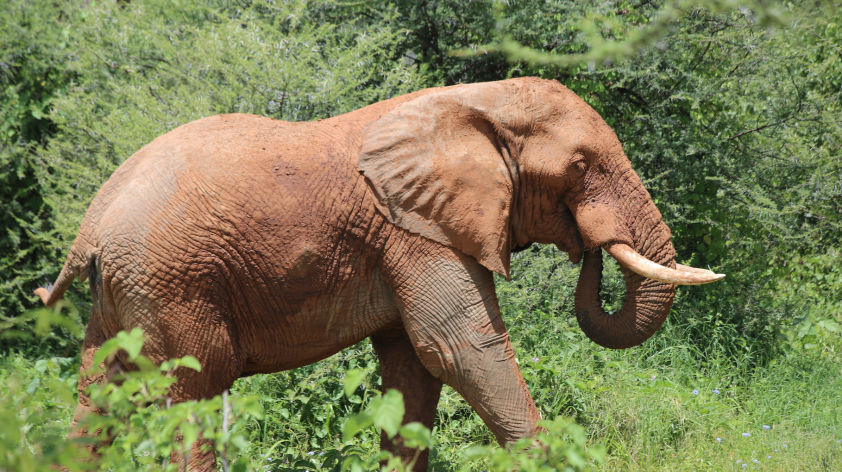
The Elephant in the "Room"
What if an elephant comes along and I'm staring right at it?
During my time as a conservation educator at San Diego Zoo Global, I have been asked a wide range of questions, but the one above was definitely a first! It did, however, pose a very real possibility while we were training our giraffe research field team in northern Kenya.
Here in San Diego, we can observe the beautiful elephants cared for at the Zoo and Safari Park. At our field sites in Kenya though, wild elephants share the landscape in direct overlap with human communities, so keeping a safe distance from them while we were on foot became very important. This is just one instance that highlights how people in these areas interact with their environment on a daily basis, but there are countless other examples of how communities in Kenya coexist with the wildlife around them.
My colleague, David O’Connor, and I recently spent the month of May at Namunyak and Loisaba Conservancies, where we launched a two-year pilot research project with our collaborators. Although giraffe are iconic animals, there is relatively little known about their ecology. Giraffe populations have been in rapid decline, which is (as is the case with most species) largely due to human pressures. The subspecies with which we work, reticulated giraffe, is estimated to have dropped around 70% over the last 20 years, and and could soon be officially listed as endangered. In response to this conservation crisis, SDZG is partnering with The Nature Conservancy, the Northern Rangelands Trust, the Loisaba Conservancy, the Lewa Wildlife Conservancy, the Namunyak Wildlife Conservation Trust, and Sarara Camp.
The title’s question was raised while our field team was learning to use handheld GPS units for navigation across the Namunyak Conservancy landscape and during installation of a large network of camera traps. Using the GPS and camera trap equipment along with other field methods, the Twiga Walinzi (Giraffe Guards) will be gathering data so that we can better understand how reticulated giraffe are moving across the landscape and where there are potential areas of conflict with human settlements.
Many of us think of GPS as the little blue dot on our phone that gives directions, but the Twiga Walinzi will be using GPS to find their way through savannah grasslands and woodlands to data collection sites. They will also mark GPS coordinates that will be used to generate maps that overlay giraffe ranges with livestock movements from herds in the area and data gathered through surveys with people.
During my next trip this October, our field team will be collecting survey data from communities in the area. The combination of social surveys and ecological research offers a more holistic view of the reasons why giraffe are in decline and will help us pinpoint areas to focus community outreach.
Although there is still more to be done, I love working alongside the Twiga Walinzi to save these majestic animals. None of this would be possible without the supporters of SDZG – so to all of you, asante sana (thank you)!













